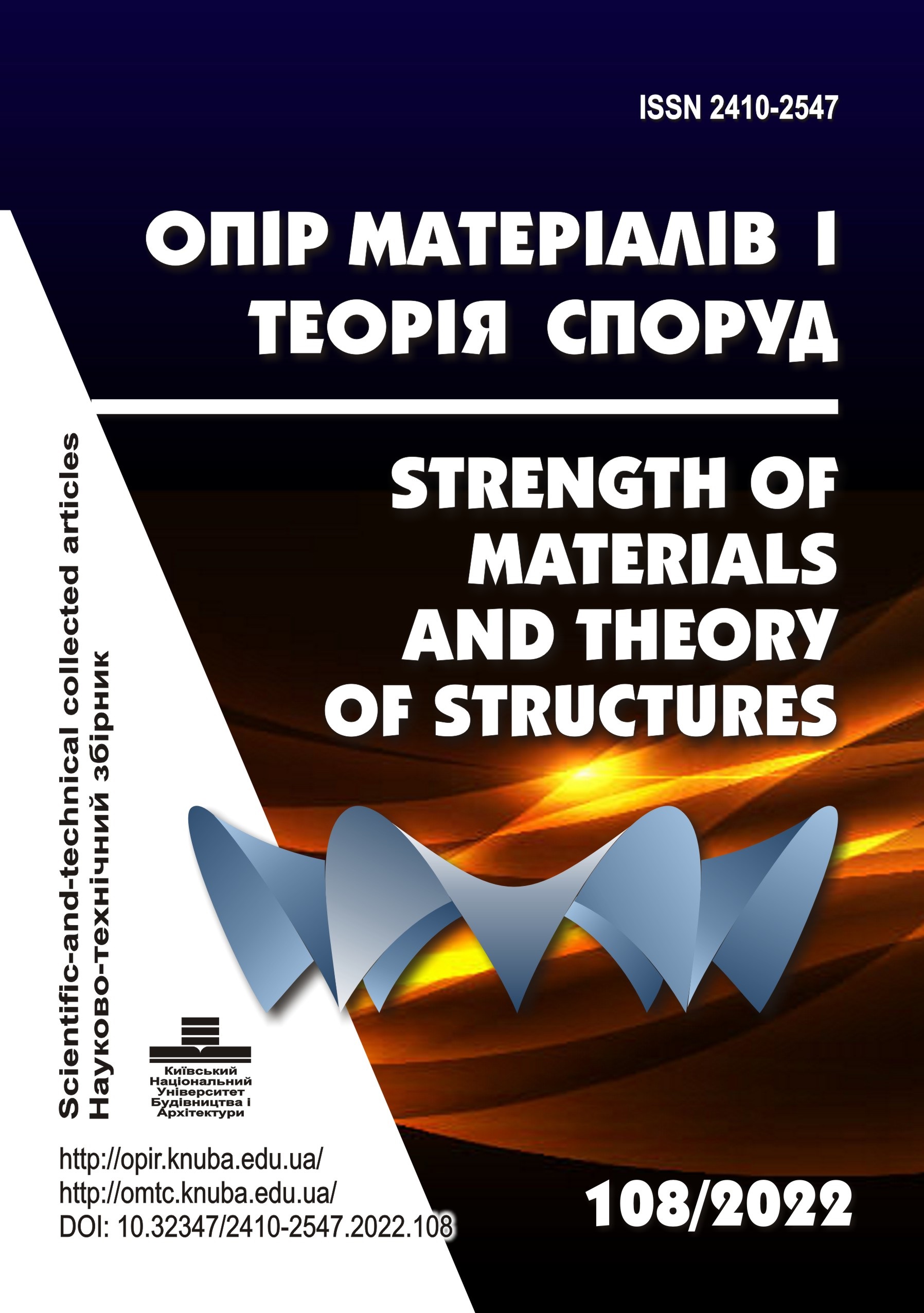Generation of energy in console piezoelectric energy harvesters
DOI:
https://doi.org/10.32347/2410-2547.2022.108.337-348Keywords:
cantilever energy harvester, passive layer, piezoceramic overlay, forced oscillations, energy generation, energy harvesting, potential difference on the plates, power of the energy collectorAbstract
Energy harvesting of mechanical vibrations and their conversion into electrical energy using piezoelectric devices has become widespread. This has been made possible by the creation of high-energy piezoelectric materials and the proliferation of miniature devices with a few milliwatts of power.
In this work, the oscillations of the rod cantilever bimorph energy harvester under harmonic loads are investigated. A two-layer rod consisting of a brass base and a rectangular piezoelectric element with electroded flat surfaces without and with tip mass is considered. The thickness of the layers is much less than the width and the width is much less than the length, which allows us to use the hypothesis of flat sections and assumptions of the potential difference linearity by thickness of the element, as well as beams bending relations.
There is derived the characteristic equation for beam bending oscillations, the wave numbers, circular frequencies and natural frequencies are determined. There is carried out The averaging of material characteristics over the cross-sectional area. Eigenforms of oscillations are constructed, the dependence of natural frequencies from body size and tip mass is analyzed.
The next step is to study the forced oscillations of the energy harvesters with tip mass at the end at given oscillations of the base. The equation of the elastic line of the console is formed, the maximum deflections and angles of rotation are determined. The voltage generated on the piezo element plates is determined taking into account the electrical resistance. Due to the voltage and resistance of the conduct line the power of the energy harvester is determined. Curves of voltage and power dependence from load frequency and external resistance are constructed. It is established that the voltage and power of the element change in proportion to R. The maximum power of the energy collector occurs in the vicinity of resonances, and before the first resonance the power is almost zero. Between the first and second resonance, the power is approximately 1,5 mW. During the transition to the ultrasonic zone, the power of the energy collector increases significantly.Analysis of the harvester operation at resonant frequencies requires consideration of the damping of oscillations in the material.
References
P. Cahill, B. Hazra, R. Karoumiat al. Data of piezoelectric vibration energy harvesting of a bridge undergoing vibration testing and train passage / Data in Brief, Volume 17, April 2018, Pages 261-266. https://doi.org/10.1016/j.dib.2018.01.009
Erturk, A. & Inman, D., 2011. Piezoelectric Energy Harvesting. 1 st edition, John Wiley & Son.
L.H. Fanga, S.I.S. Hassana at al. Charaterization of Differents Dimension Piezoelectric Transducer For Sound Wave Energy Harvesting / Energy Procedia, 105 (2017). Pages 836 – 843. doi: 10.1016/j.egypro.2017.03.398
Filippov A.P. Kolebaniya deformiruemyih sistem (Oscillations of deformable systems [in Russian]). M: Mashinostroenie, 1970. 736 с.
Grigoryeva L.O. Rezonansni kolyvannia piezokeramichnykh tsylindriv z vrakhuvanniam dysypatsii enerhii (Resonant oscillations of piezoceramic cylinders taking into account energy dissipation [In Ukrainian])/ L.O.Grigoryeva,O.I. Bezverkhyi // Problemy obchysliuvalnoi mekhaniky ta mitsnosti konstruktsii (Problems of computational mechanics and strength of structures). -2020, вип. 31.- С. 44-54.
Grigoryeva, L.O. Piezoelectric devices for energy harvesting in building structures // Transfer of innovative technologies, Vol.4, No.1 (2021), 22-24.
Grigoryeva, L.O. Transient responses in Piezoceramic Multilayer Actuators Taking into Account External Viscoelastic Layers // Strength of Materials and Theory of Structures. - № 105 (2020). – Р. 255-266. DOI: https://doi.org/10.32347/2410-2547.2020.105.255-266
S.J. Rupitsch. Piezoelectric Sensors and Actuators: Fundamentals and Applications. Springer: 2019. 559 p. ISBN: 978-3-662-57534-5.
N. Sezer, M. Koç. A comprehensive review on the state-of-the-art of piezoelectric energy harvesting. Nano Energy, Volume 80, February 2021, 105567.
Sharapov V.M., Sotula Zh.V., Kunitskaya L.G. Elektroakusticheskie preobrazovateli (Electroacoustic transducers [in Russian]) // Pod red. V.M. Sharapova. – Moskow: Tehnosfera, 2013.- 296 p., ISBN 978-5-94836-357-8.
D. Shen. Piezoelectric energy harvesting devices for low frequency vibration applications: dissertation for the Degree of Doctor of Philosophy. Auburn, Alabama May 9, 2009. – 195 p.
X. Xu, D. Cao, H. Yang, M. He. Application of piezoelectric transducer in energy harvesting in pavement / International Journal of Pavement Research and Technology. Volume 11, Issue 4, July 2018, Pages 388-395.https://doi.org/10.1016/j.ijprt.2017.09.011
Downloads
Published
Issue
Section
License

This work is licensed under a Creative Commons Attribution 4.0 International License.
Authors retain copyright and grant the journal right of first publication with the work simultaneously licensed under a Creative Commons Attribution License that allows others to share the work with an acknowledgement of the work's authorship and initial publication in this journal.

